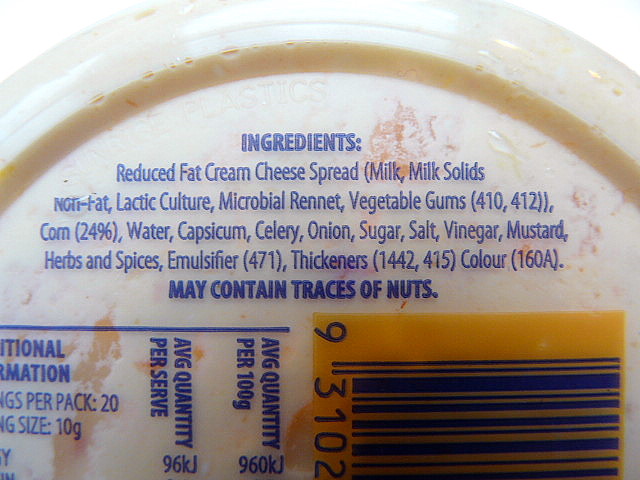Natural vs. Synthetic Emulsifier In Food: Pros and Cons
All Concerning the Function of an Emulsifier in Food and Its Significance in Modern Cuisine
Emulsifiers are essential in contemporary food, assisting in the mix of immiscible fluids like oil and water. Their capability to maintain mixtures boosts the structure and taste of various foodstuff. From salad dressings to baked items, emulsifiers play a substantial role in both business and home cooking. Yet, the science behind their function and the future innovations in their use remain much less discovered. Emulsifier In Food. What much more could be unearthed concerning these vital cooking agents?
Recognizing Emulsification: The Scientific Research Behind the Process
Emulsification may appear like a straightforward cooking technique, it involves intricate scientific principles that are necessary for developing stable combinations of immiscible liquids, such as oil and water. At the heart of this procedure exists the idea of surface tension, which protects against both fluids from blending normally. Emulsifiers, materials that minimize surface area tension, play a vital function in promoting the mix of these fluids. They have both hydrophilic (water-attracting) and hydrophobic (water-repelling) residential or commercial properties, allowing them to secure themselves at the interface between oil and water.
When an emulsifier is introduced and the combination is perturbed, it forms a safety obstacle around spread droplets of one fluid within the various other, maintaining the blend. This activity not just enhances structure and mouthfeel in food products yet additionally contributes to their aesthetic allure. Emulsifier In Food. Comprehending the science behind emulsification is fundamental in modern cuisine, enabling chefs to develop a range of sauces, dressings, and emulsified dishes
Common Sorts Of Emulsifiers Made Use Of in Food
Emulsifiers are essential ingredients in the food market, playing a crucial role in maintaining mixes of oil and water. Numerous kinds of emulsifiers are frequently utilized, each with one-of-a-kind residential properties matched for different applications. Lecithin, originated from soybeans or egg yolks, is among one of the most popular natural emulsifiers, typically discovered in dressings and chocolates. Mono- and diglycerides, which are acquired from glycerol and fats, are widely made use of in baked goods and margarine to enhance texture and prolong life span. Another common emulsifier is polysorbate 80, favored for its capacity to enhance the consistency of gelato and sauces. In addition, xanthan periodontal and guar periodontal function as thickening agents that also add to emulsification in gluten-free products. These emulsifiers are important to creating a stable, palatable product in modern food formulas, ensuring a pleasant sensory experience for customers.
The Duty of Emulsifiers in Different Food Products
A range of food items rely upon emulsifiers to achieve preferred structures and stability. These compounds facilitate the mixing of immiscible fluids, such as oil and water, which is vital in numerous refined foods. In salad dressings, emulsifiers help keep a regular combination, stopping splitting up and enhancing rack life. In baked products, they add to a consistent crumb structure and dampness retention, boosting total quality.
Emulsifiers also play a considerable role in milk products, such as ice lotion and yogurt, where they maintain fat beads, making certain a smooth mouthfeel. Furthermore, in dressings and sauces, they boost viscosity and improve spreadability. This performance is essential in the production of chocolates, margarine, and mayonnaise, where a cohesive item is necessary. Overall, using emulsifiers in numerous foodstuff is integral to modern-day food production, improving stability and uniformity across a large variety of things.
Exactly How Emulsifiers Enhance Texture and Taste

When incorporated into food products, emulsifiers substantially improve both texture and flavor, producing an even more enjoyable consuming experience. These compounds facilitate the mixing of components that normally do not blend well, such as oil and water, resulting in a smoother, creamier consistency. This not just boosts mouthfeel but likewise allows tastes to distribute evenly throughout the product, magnifying the overall taste.

Emulsifiers in Home Cooking: Tips and Techniques
Exactly how can home cooks successfully make use of emulsifiers to boost their recipes? Emulsifiers play an important role in attaining desirable textures and tastes in homemade dishes. Utilizing egg yolks in mayonnaise or hollandaise sauce enables for a steady solution, incorporating oil and water properly. Home chefs can likewise experiment with mustard, which works as an emulsifier in vinaigrettes, guaranteeing a smooth uniformity.
In baking, incorporating lecithin, discovered in egg yolks or soy, can improve dough security and wetness retention. Furthermore, using commercial emulsifiers like xanthan gum or guar gum tissue can aid thicken sauces and dressings while keeping a velvety mouthfeel.
When developing ice lotions or whipped toppings, emulsifiers can avoid ice crystal development, resulting in a smoother texture. By understanding these methods, home chefs can greatly raise their culinary developments, offering delightful and constant meals that showcase the power of emulsification.
The Future of Emulsifiers in Culinary Advancement
As the culinary world remains to evolve, the function of emulsifiers is positioned to become progressively cutting-edge and diverse. Developments in food science are causing the growth of new emulsifying agents obtained from natural sources, which cater to health-conscious customers and enhance the sensory top qualities of dishes. Advancements such as plant-based emulsifiers are getting grip, allowing cooks to develop vegan and allergen-free alternatives without compromising appearance or taste.
Additionally, making use of emulsifiers in molecular gastronomy is expanding, allowing this content cooks to try out distinct appearances and presentations that astound diners. As sustainability ends up being a priority, the future may see a shift in the direction of green emulsifiers that decrease environmental effect.
Inevitably, emulsifiers will certainly remain to play an important role in culinary advancement, bridging the space in between tradition and modernity, and permitting chefs to push the borders of creative thinking in their kitchens.
Frequently Asked Concerns

Are Emulsifiers Safe for People With Allergic reactions?
Emulsifiers can be risk-free for individuals with allergic reactions, depending upon their specific level of sensitivities. Specific emulsifiers, derived from allergenic resources like soy or eggs, might set off responses, necessitating cautious ingredient analysis and assessment with healthcare professionals.
Exactly How Do Emulsifiers Influence Food Life Span?
Emulsifiers improve food shelf life by stabilizing combinations, avoiding splitting up, and decreasing microbial development. This stability assists maintain texture and taste over time, enabling products to remain safe and enticing for consumption much longer than without emulsifiers.
Can Emulsifiers Be Derived From All-natural Resources?
Yes, emulsifiers can be stemmed from natural sources such as plants, eggs, and milk items (Emulsifier In Food). These natural emulsifiers help maintain mixtures, improving texture and consistency in numerous food applications while being chosen this hyperlink for health-conscious customers
What Are the Ecological Impacts of Emulsifier Production?
The environmental effects of emulsifier manufacturing include source depletion, habitat damage, and contamination from synthetic processes. All-natural emulsifier sourcing can mitigate some impacts, but overall, industrial techniques still posture substantial environmental obstacles to communities worldwide.

Exist Vegan Emulsifiers Available in the marketplace?
Yes, there are several vegan emulsifiers readily available in the market, such as lecithin stemmed from soy or sunflower, guar gum tissue, and xanthan gum. These options accommodate plant-based diet regimens without endangering emulsifying residential properties.
Emulsifiers are crucial active ingredients in the food industry, playing a crucial duty in supporting mixtures of oil and water. A variety of food items count on emulsifiers to attain preferred appearances and stability. When integrated into food products, emulsifiers significantly enhance both appearance and taste, developing a more satisfying consuming experience. Additionally, emulsifiers can maintain air pockets More Bonuses in whipped products like creams and mousses, leading to a light and airy structure. Emulsifiers improve food shelf life by maintaining blends, preventing splitting up, and decreasing microbial growth.